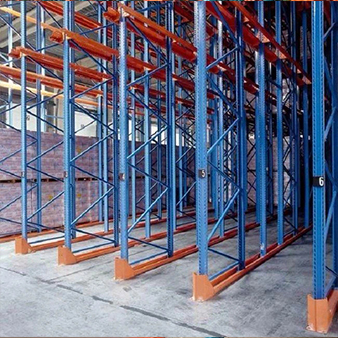Rationally planning warehouse space to use storage shelves efficiently is essential for maximizing storage capacity, improving access, and ensuring a smooth workflow. Here's a step-by-step guide to help you with the planning process:
Assess Your Storage Needs:
Begin by understanding the types of items you need to store, their sizes, weights, and quantities. Consider any special requirements, such as climate control or security.
Analyze Available Space:
Measure and assess the available warehouse space, taking into account the dimensions, height, and layout. Consider any obstacles or structural elements that may affect storage.
Create a Floor Plan:
Develop a floor plan of the warehouse, including storage shelf locations, aisles, work areas, and other zones. Software tools can help with this process.
Select the Right Shelving Systems:
Choose storage shelves that are appropriate for your storage needs. Consider factors like material, load capacity, adjustability, and type of goods to be stored.
Layout and Spacing:
Determine the layout and spacing between storage shelves. Consider the width of aisles, taking into account the type of equipment or vehicles that will be used for moving items.
Zone Your Warehouse:
Divide the warehouse into zones based on the type, size, and frequency of access to stored items. Common zones include receiving, storage, packing, and shipping.

Vertical Storage:
Utilize vertical space by using tall storage shelves. Ensure that the height of the shelves aligns with the height of the warehouse, but leave some room for overhead clearance.
Accessibility:
Plan for easy access to storage shelves. High-priority or frequently accessed items should be stored in easily reachable locations.
Safety Measures:
Incorporate safety features, such as backstops, guardrails, and anti-tip mechanisms, to prevent accidents and ensure the stability of the shelves.
Aisle Widths:
Determine the width of aisles based on the type of equipment you'll use for material handling. Wider aisles accommodate forklifts and pallet jacks, while narrow aisles may be suitable for manual picking.
Organize Zones:
Within each zone, use storage shelves to organize items efficiently. Consider using labels, bins, or dividers to categorize and mark products.
Dynamic Slotting:
Implement a dynamic slotting strategy to regularly review and adjust the locations of products based on demand. Ensure that frequently picked items are easily accessible.
Traffic Flow:
Plan for a logical traffic flow within the warehouse. Items should move smoothly from receiving to storage, and then to packing and shipping.
Flexibility:
Design the layout to be flexible and adaptable. As your inventory and business needs change, be prepared to reconfigure the shelving and layout.
Safety and Compliance:
Ensure that your warehouse layout complies with safety regulations, such as fire safety codes and building codes. These regulations may dictate aisle widths, clearances, and other factors.
Employee Input:
Involve employees who will work in the warehouse when planning the layout. Their input can help identify potential challenges and improve workflow.
Test the Layout:
Before finalizing the layout, consider conducting a trial run to assess its practicality. Identify any issues and make adjustments as needed.
Documentation:
Create documentation of the planned layout and share it with relevant personnel. This will serve as a reference for everyone involved in the warehouse operations.
By following these steps, you can rationally plan your warehouse space to use storage shelves efficiently, optimizing storage capacity and improving the overall functionality of your warehouse. Periodically review and adjust the layout as your storage needs evolve. The above is the analysis of storage shelf manufacturers, if you have any questions and needs, you can contact us! We will provide you with satisfactory warehouse and storage solutions.